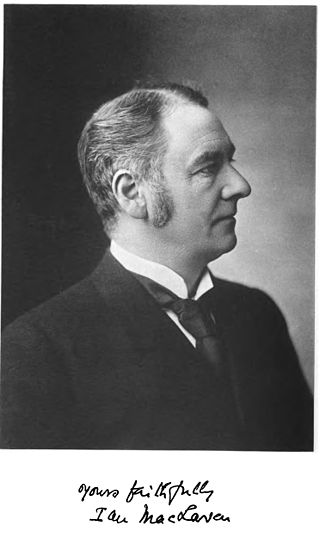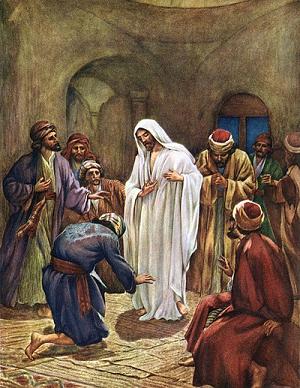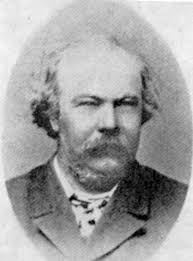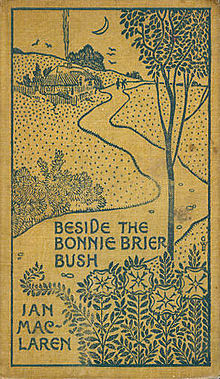This article contains information about the literary events and publications of 1894.

George Douglas Brown was a Scottish novelist, best known for his highly influential realist novel The House with the Green Shutters (1901), which was published the year before his death at the age of 33.

Samuel Rutherford Crockett, who published under the name "S. R. Crockett", was a Scottish novelist.
The Scottish Renaissance was a mainly literary movement of the early to mid-20th century that can be seen as the Scottish version of modernism. It is sometimes referred to as the Scottish literary renaissance, although its influence went beyond literature into music, visual arts, and politics. The writers and artists of the Scottish Renaissance displayed a profound interest in both modern philosophy and technology, as well as incorporating folk influences, and a strong concern for the fate of Scotland's declining languages.

Sir William Robertson Nicoll was a Scottish Free Church minister, journalist, editor, and man of letters.

John Watson, was a minister of the Free Church of Scotland. He is remembered as an author of fiction, known by his pen name Ian Maclaren.

The Kailyard school is a proposed literary movement of Scottish fiction; kailyard works were published and were most popular roughly from 1880–1914. The term originated from literary critics who mostly disparaged the works said to be within the school; it was not a term of self-identification used by authors alleged to be within it. According to these critics, kailyard literature depicted an idealised version of rural Scottish life, and was typically unchallenging and sentimental.

Clan MacLaren is a Highland Scottish clan. Traditional clan lands include the old parish of Balquhidder which includes the villages of Lochearnhead and Strathyre, and is about 18 miles (29 km) long and 7 miles (11 km) broad, spanning 54,675 acres (22,126 ha), long known as "Maclaren Country".
Drumtochty Forest is a coniferous woodland in Kincardineshire, Scotland. In earlier times this forest was associated with Drumtochty Castle. Other notable buildings in this part of the Mearns include Fasque House, Fetteresso Castle, and Muchalls Castle.
Bonnie Brier Bush may refer to:
MacLaren or Maclaren is a surname of Scottish origin. The name is an Anglicisation of the Gaelic Mac Labhrainn meaning "son of Labhrann". The Gaelic personal name Labhrann is a Gaelicised form of Lawrence.

William Brassey Hole was a Scottish Victorian painter, illustrator, etcher, and engraver, known for his industrial, historical and biblical scenes.
This is a list of bestselling novels in the United States from 1895 through 1899, as determined by The Bookman, a New York–based literary journal. Without the international copyright law which came into force in 1891, these volumes could have been printed and published by anyone, the change in this state of affairs made it possible to compile accurate sales figures.
Events from the year 1894 in Scotland.

The novel in Scotland includes all long prose fiction published in Scotland and by Scottish authors since the development of the literary format in the eighteenth century. The novel was soon a major element of Scottish literary and critical life. Tobias Smollett's picaresque novels, such as The Adventures of Roderick Random and The Adventures of Peregrine Pickle mean that he is often seen as Scotland's first novelist. Other Scots who contributed to the development of the novel in the eighteenth century include Henry Mackenzie and John Moore.

Scottish literature in the nineteenth century includes all written and published works in Scotland or by Scottish writers in the period. It includes literature written in English, Scottish Gaelic and Scots in forms including poetry, novels, drama and the short story.
There Grows a Bonnie Brier Bush, originally The Bonnie Brier Bush, is a traditional Scottish music folk song. It was included with expanded lyrics in Burns' Scots Musical Museum in 1797. Ian Maclaren included part of the song lyrics in the preface to his bestselling collection of stories set in Scotland, Beside the Bonnie Brier Bush (1894). A series of theatrical versions and the 1921 film The Bonnie Brier Bush followed.
George Blake (1893–1961) was a Scottish journalist, literary editor and novelist. His The Shipbuilders (1935) is considered a significant and influential effort to write about the Scottish industrial working class. "At a time when the idea of myth was current in the Scottish literary world and other writers were forging theirs out of the facts and spirit of rural life, Blake took the iron and grease and the pride of the skilled worker to create one for industrial Scotland." As a literary critic, he wrote a noted work against the Kailyard school of Scottish fiction; and is taken to have formulated a broad-based thesis as cultural critic of the "kailyard" representing the "same ongoing movement in Scottish culture" that leads to "a cheapening, evasive, stereotyped view of Scottish life." He was well known as a BBC radio broadcaster by the 1930s.

Archibald MacLaren or Maclaren was a Scottish fencing master, gymnast, educator and author who in 1858 opened a well-equipped gymnasium at the University of Oxford where from 1860 to 1861 he trained 12 sergeants and their officer who then disseminated his training regimen into the newly-formed Army Gymnastic Staff (AGS) for the British Army. The AGS was later to become the Royal Army Physical Training Corps. His training scheme was also later adopted by several British public schools including Rugby School in 1872 and universities. He wrote a number of books on physical training theory and practice.
J.H. Millar is noted for coining the term the Kailyard for a group of Scottish writers: including J. M. Barrie, Ian Maclaren, J. J. Bell, George MacDonald, Gabriel Setoun, Robina F. Hardy and, S. R. Crockett. His criticism of these writers was published in the April 1895 issue of The New Review. His A Literary History of Scotland (1903) was regarded for many years of the early 20th century as the standard work on Scottish literature. His father was Lord Craighall, a notable senator of the College of Justice in Scotland. In his youth he was schooled at the Edinburgh Academy and went to Balliol College at the University of Oxford. He took up a career in law, being called in 1889 to the Scottish Bar. He subsequently lectured and then became of Professor of Constitutional Law and Constitutional History in 1909 at the University of Edinburgh. He held this post until he retired in 1925. Over the period 1895 and 1917 he made many contributions to the Blackwood's Magazine. Among these contributions was an anonymous contribution "The Works of Mr Kipling" (Blackwood's Magazine CLXIV 1898 October pp. 470–482, With the authorship confirmed by Blackwood's Contributors' Book in the Natinonal Library of Scotland which was to become an influential assessment of Kipling's work.












